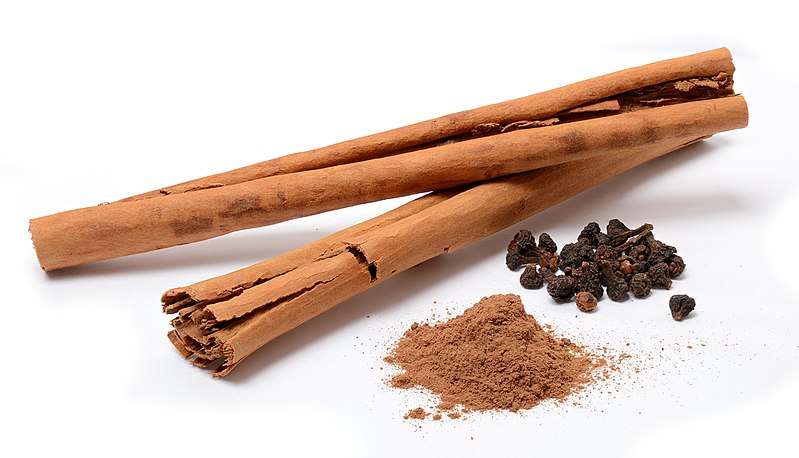
Source: Simon A. Eugster/Wikimedia
If you want to lose weight, you should avoid stuffing yourself with cinnamon rolls and other cinnamon-spiced treats. Yet cinnamon itself isn’t the problem. The common holiday spice might actually protect against obesity and hyperglycemia.
Cinnamon contains an essential oil, cinnamaldehyde, that has been shown to improve the metabolic health of mice. A new study indicates that cinnamaldehyde is also beneficial in human adipocytes, or fat cells, where it reprograms metabolism and stokes thermogenesis. In other words, cinnamaldehyde can help human adipocytes burn fat.
The fat-burning effects were observed in human cells by University of Michigan scientists, who also elucidated the underlying thermogenic mechanisms. These scientists, led by Jun Wu, Ph.D., a research assistant professor at the University of Michigan’s Life Sciences Institute, noticed that in adipocytes treated with cinnamaldehyde, cell signaling and gene expression were altered.
In particular, cinnamaldehyde (CA) “significantly activated protein kinase A (PKA) signaling, increased expression levels of thermogenic genes, and induced phosphorylation of HSL and PLIN1 in murine primary adipocytes.” The scientists also observed an increase in Ucp1 and Fgf21, which are important metabolic regulatory proteins involved in thermogenesis.
These and other details appear in the December issue of the journal Metabolism, in an article entitled, “Cinnamaldehyde induces fat cell-autonomous thermogenesis and metabolic reprogramming.”
“Inhibition of PKA or p38 MAPK enzymatic activity markedly inhibited the CA-induced thermogenic response,” wrote the article’s authors. “In addition, chronic CA treatment regulates metabolic reprogramming. Importantly, both acute and chronic effects of CA were observed in human adipose stem cells isolated from multiple donors.”
Wu and her colleagues tested human adipocytes from volunteers representing a range of ages, ethnicities, and body mass indices. Adipocytes normally store energy in the form of lipids. This long-term storage was beneficial to our distant ancestors, who had much less access to high-fat foods and thus a much greater need to store fat. That fat could then be used by the body in times of scarcity or in cold temperatures, which induce adipocytes to convert stored energy into heat.
“It's only been relatively recently that energy surplus has become a problem,” Dr. Wu said. “Throughout evolution, the opposite—energy deficiency—has been the problem. So, any energy-consuming process usually turns off the moment the body doesn't need it.”
With the rising obesity epidemic, researchers have been looking for ways to prompt fat cells to activate thermogenesis, turning those fat-burning processes back on. One such activation method, Dr. Wu believes, may involve cinnamaldehyde—particularly now that cinnamaldehyde’s effects have a mechanistic explanation.
“Given the wide usage of cinnamon in the food industry,” noted the authors of the current study, “the notion that this popular food additive, instead of a drug, may activate thermogenesis, could ultimately lead to therapeutic strategies against obesity that are much better adhered to by participants.”
“Cinnamon has been part of our diets for thousands of years, and people generally enjoy it,” Dr. Wu explained. “So, if it can help protect against obesity, too, it may offer an approach to metabolic health that is easier for patients to adhere to.”
Now, before anyone goes dumping tons of extra cinnamon in their eggnog in hopes of keeping holiday-season pounds at bay, Dr. Wu cautioned that further study is needed to determine how best to harness cinnamaldehyde's metabolic benefits without causing adverse side effects.



